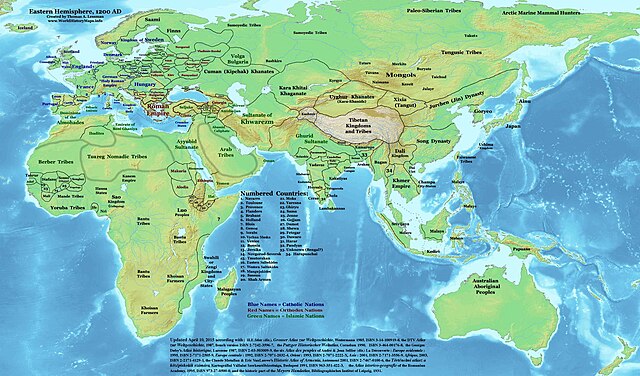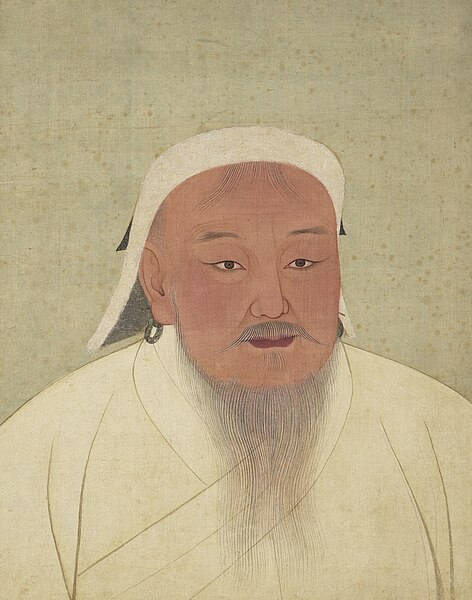The House of Ögedei, sometimes called the Ögedeids, was an influential Mongol family and a branch of the Borjigin clan from the 12th to 14th centuries. They were descended from Ögedei, a son of Genghis Khan who succeeded his father to become the second khagan of the Mongol Empire. Ögedei continued the expansion of the Mongol Empire.
Ögedeids coinage of the time of Qaidu. AH 668-701 AD 1269-1302 Otrar mint. Dated AH 685 (AD 1286).
The Mongol Empire of the 13th and 14th centuries was the largest contiguous empire in history. Originating in present-day Mongolia in East Asia, the Mongol Empire at its height stretched from the Sea of Japan to parts of Eastern Europe, extending northward into parts of the Arctic; eastward and southward into parts of the Indian subcontinent, attempted invasions of Southeast Asia, and conquered the Iranian Plateau; and westward as far as the Levant and the Carpathian Mountains.
Mongol tribes during the Khitan Liao dynasty (907–1125)
The Old World on the eve of the Mongol invasions, c. 1200
Genghis Khan, National Palace Museum in Taipei, Taiwan
Genghis Khan ascended the throne in the Ikh Khuraldai region in the Onan river, from the Jami' al-tawarikh.





